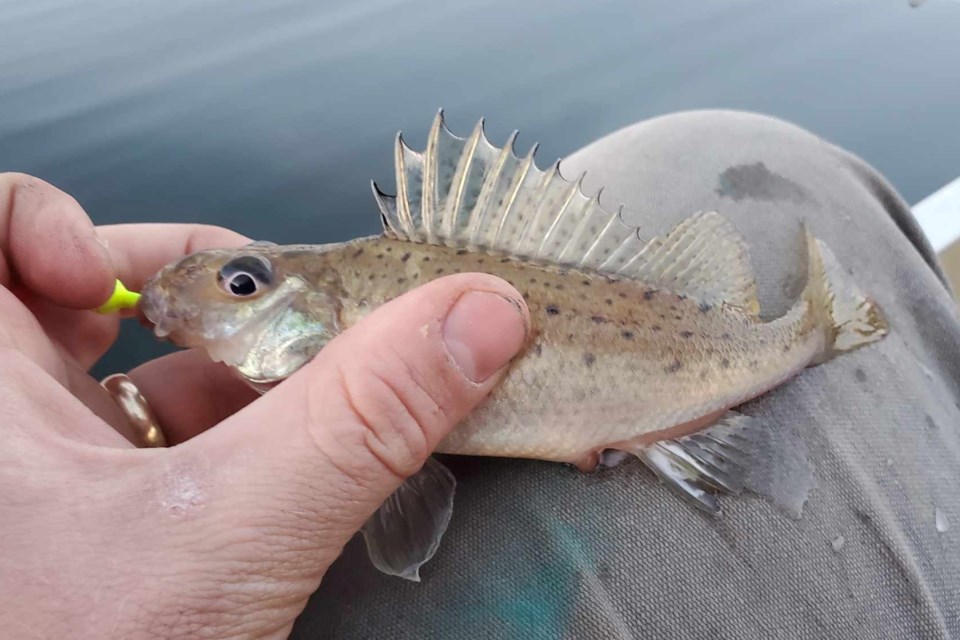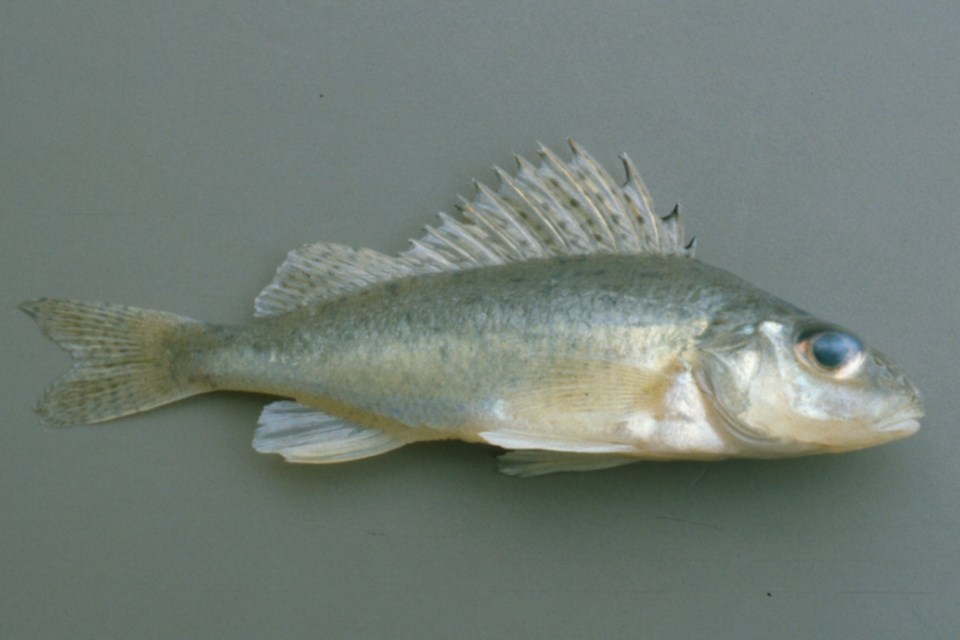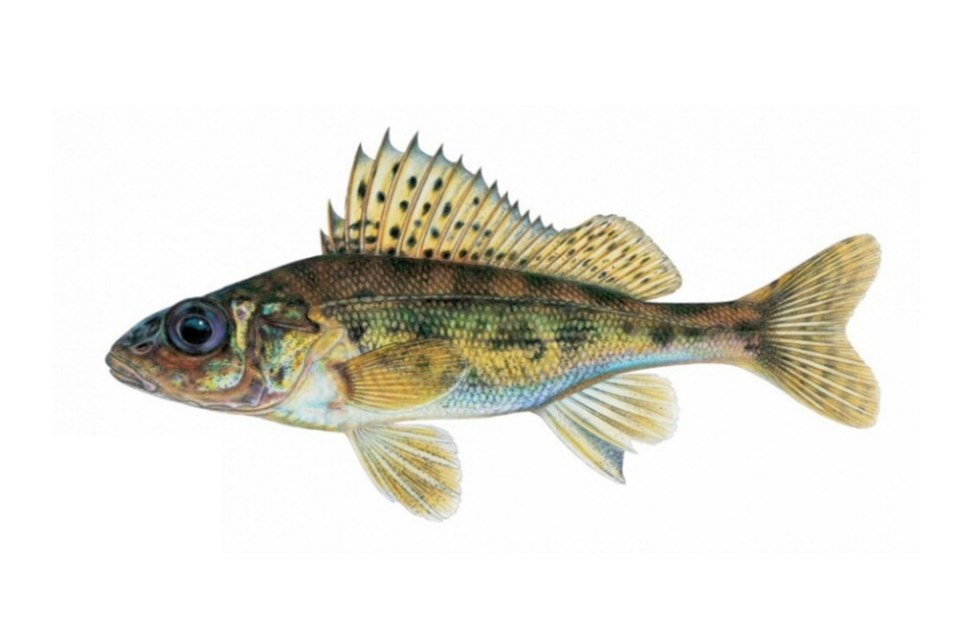Dustin Graham has been fishing in the north his entire life, but even he was surprised by a recent catch he made just north of the Sault.
Earlier this month, the Algoma Steel employee was out on the water in Jones Landing — located between Harmony Beach and Chippewa River — when a peculiar fish got hooked to the end of his line.
“I thought I hooked into a perch when I first caught it, but once we pulled it up, this thing had a huge spike on its back,” Graham recalled. “My neighbours grew up in Jones Landing and none of us had seen this before. We thought it might have been some kind of walleye hybrid.”
Graham snapped a few photos of the mystery fish before releasing it back into the lake.
An experienced angler from the area had a look at the photos and confirmed that it was a “ruffe” — an invasive species of fish primarily found in Lake Superior.
“He said they’re no good,” Graham mentioned. “He didn’t realize they were out there either.”
Technically referred to as Eurasian Ruffe (Gymnocephalus cernua), the fish is a small-bodied member of the perch family, native to Europe and Asia.
According to Ontario's Ministry of Natural Resources and Forestry, ruffe have the ability to reproduce relatively rapidly and are tolerant of a range of water quality parameters.
At high densities, ruffe may impact native fish species, such as yellow perch, through competition for food and habitat.
“[They were] suspected to have been transported in the mid 1980s, definitively identified in the lower St. Louis River (tributary to Lake Superior) in the late summer 1987,” ministry spokesperson Marcela Mayo wrote.
Ontario's Invading Species Awareness Program reiterates the ministry’s points, suggesting that ruffe can quickly become the most dominant fish in local areas, ultimately putting pressure on native species.
Shortly after catching the ruffe, Graham uploaded his findings to social media and was surprised to learn he and his neighbours weren’t the only ones who hadn’t heard about the nasty fish.

“When I shared it to some local Facebook groups, most people didn’t know about them at all,” he said. “It has sparked quite a conversation. At least people are learning about it now.”
Due to their small size, ruffe are not generally considered by anglers to be good table fare, according to the ministry. For a guide to eating Ontario fish, anglers can click here.
“I know I wouldn’t put it in the frying pan,” Graham laughed.
To identify Eurasian Ruffe, Ontario’s Invading Species Awareness Program said they resemble juvenile walleye, yellow perch and trout perch, but they differ from these species in the following ways:
- Their perch-like body is less than 20 cm (8 in) long, with glassy eyes and a down-turned mouth.
- Their colouring is olive-brown on their back, with pale sides
- They lack the dark vertical stripes found on the native yellow perch
- Their front and back dorsal fins are joined; the first fin has 11-16 stiff, sharp spines with rows of dark spots between them, and the second dorsal fin has soft, flexible rays. Yellow perch and walleye, by contrast, have separated dorsal fins
- There are also sharp spines on their anal fins and gill covers
- They have no scales on the head

The ministry noted that ruffe cannot be possessed, transported, or released live.
Anglers are asked to kill the fish if caught, and reports can be made to the Invading Species hotline 1-800-563-7711 or by clicking here. Sightings can also be reported here.
“There are many agencies, groups and individuals working to prevent the introduction and spread of invasive species,” ministry spokesperson Marcela Mayo wrote. “We count on help from the public. Educating yourself on species identification and the methods of reporting invasive species (mentioned earlier) allows for more accurate and timely reporting.”

